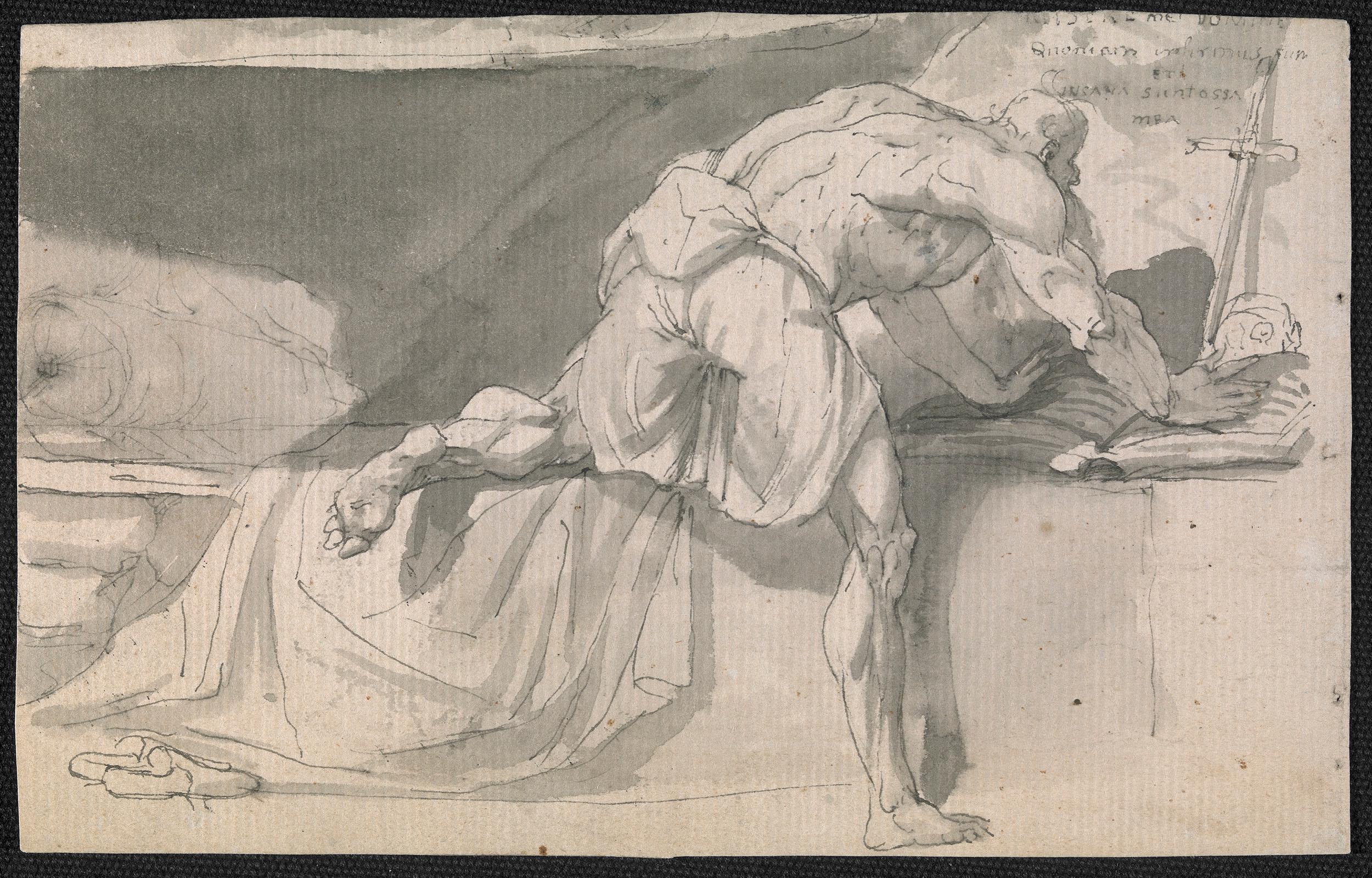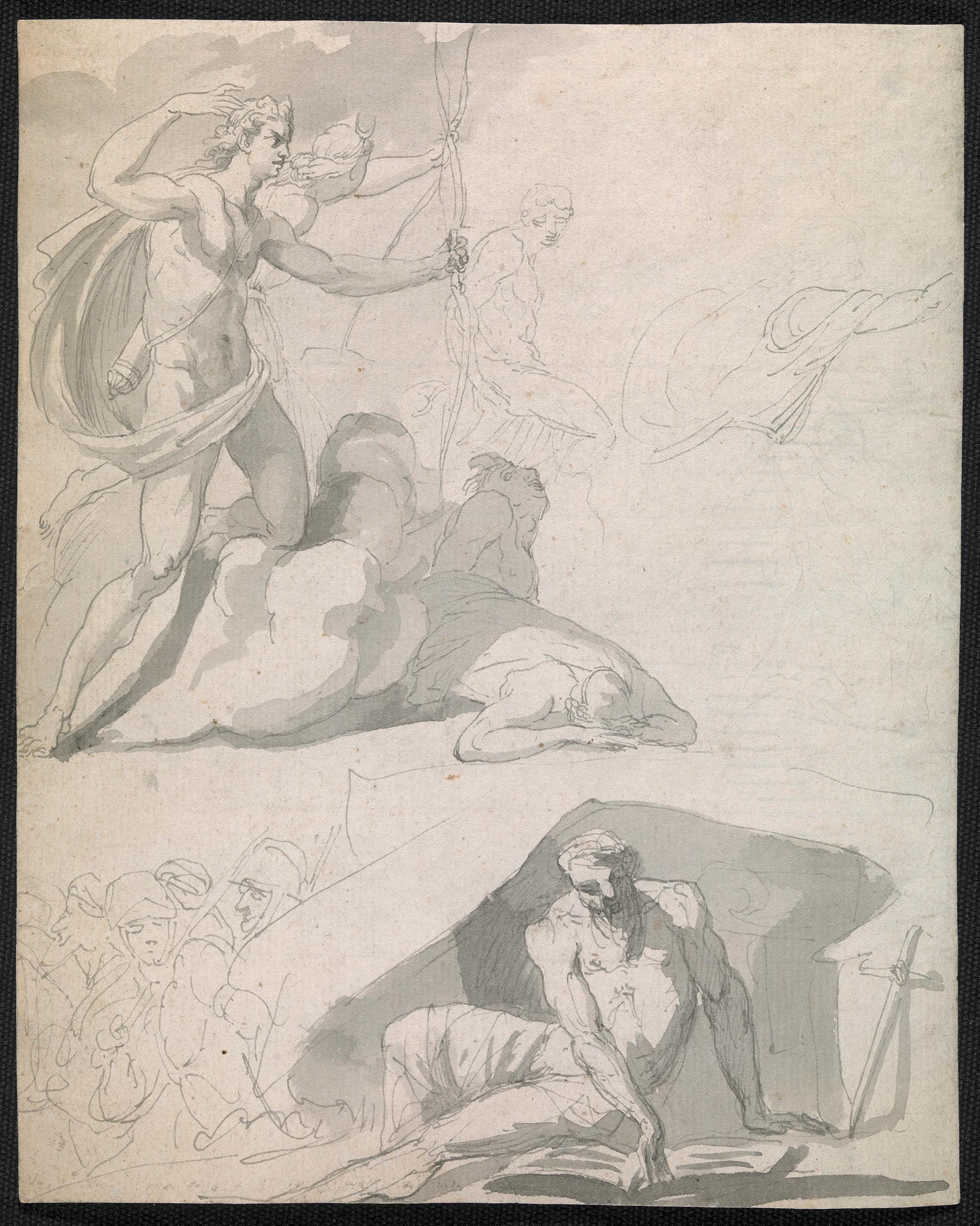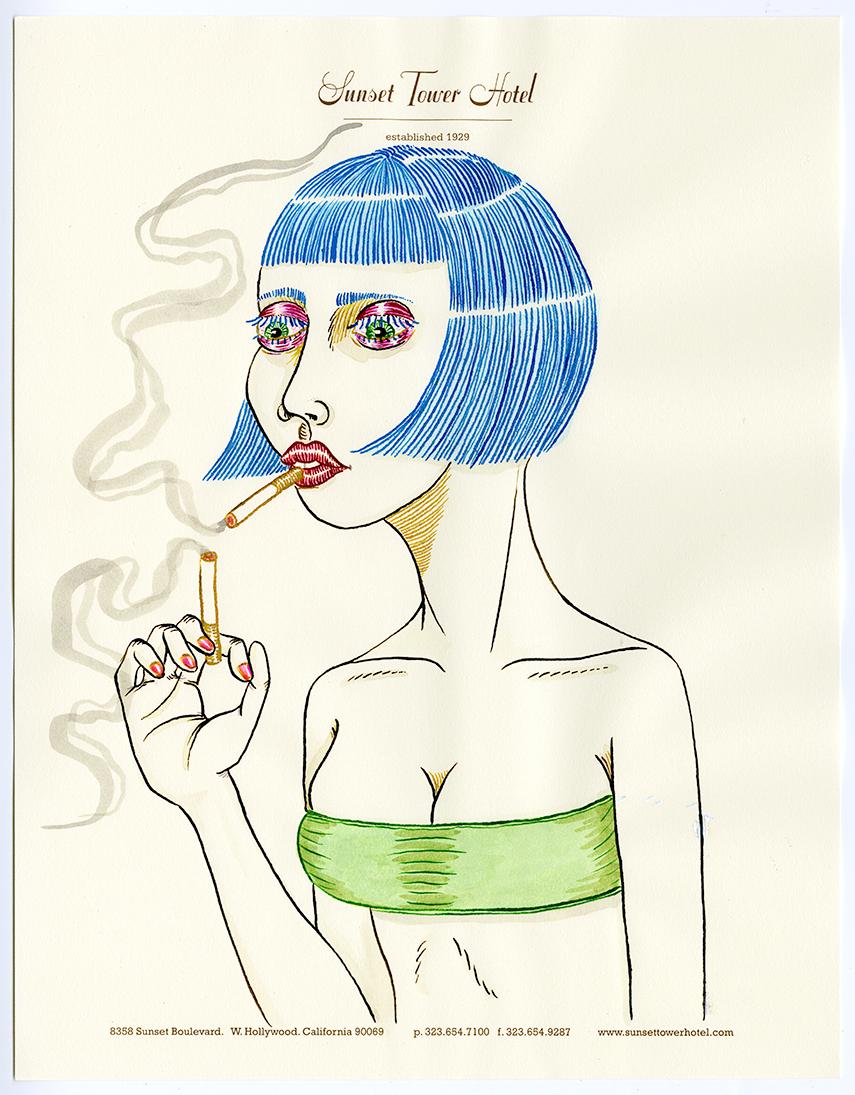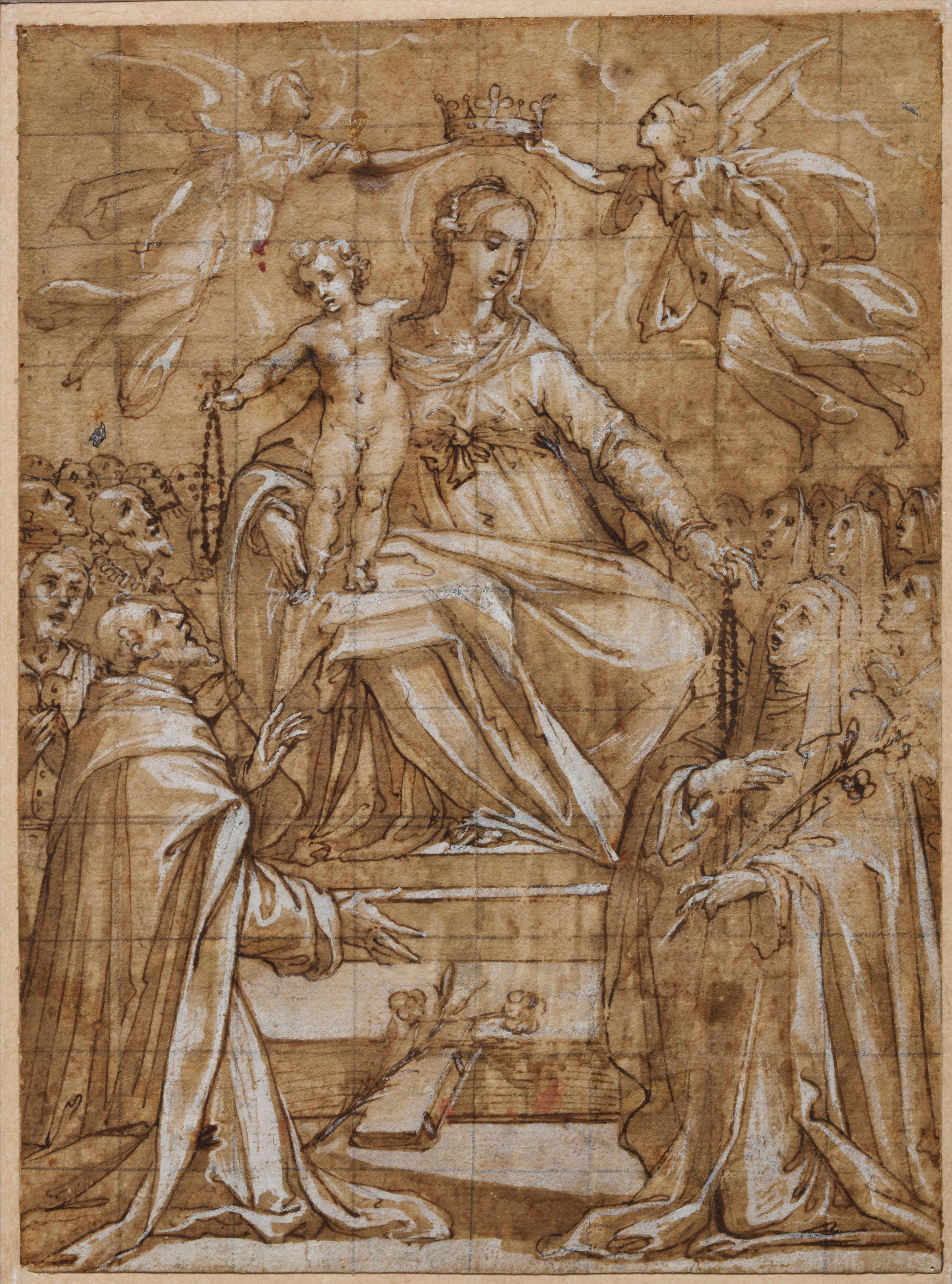Items Similar to Household - Original Pen on Paper - 1896
Want more images or videos?
Request additional images or videos from the seller
1 of 2
UnknownHousehold - Original Pen on Paper - 18961896
1896
About the Item
Household is an original drawing in pen on paper realized by an unknown artist in 1896
The State of preservation is good with a small rip on the right margin and some small foldings.
signed on the lower right but not readable.
Sheet dimension: 31 x 24.5 cm
The artwork represents the scenery of an interior house through intense black color skillfully depicted by precise and confident strokes, indicating to the beauty and magnificence of a house.
- Creation Year:1896
- Dimensions:Height: 12.21 in (31 cm)Width: 9.65 in (24.5 cm)Depth: 0.04 in (1 mm)
- Medium:
- Period:
- Framing:Framing Options Available
- Condition:Insurance may be requested by customers as additional service, contact us for more information.
- Gallery Location:Roma, IT
- Reference Number:
About the Seller
4.9
Platinum Seller
These expertly vetted sellers are 1stDibs' most experienced sellers and are rated highest by our customers.
1stDibs seller since 2017
6,713 sales on 1stDibs
Typical response time: 2 hours
- ShippingRetrieving quote...Ships From: Rome, Italy
- Return PolicyA return for this item may be initiated within 14 days of delivery.
More From This SellerView All
- The Cityscape - Original Drawing by Norbert Meyre - Mid-20th CenturyLocated in Roma, ITThe Cityscape is an original Drawing on paper realized by French painter Norbert Meyre in the mid-20 century. Drawing in pencil, pen, and marker. The artwork is represented through...Category
Mid-20th Century Modern Figurative Drawings and Watercolors
MaterialsPencil, Pen
- Bird- Drawing in Tempera - Mid-20th CenturyLocated in Roma, ITBird is an original modern artwork realized by Artist of the mid-20th Century. Mixed colored tempera on board. Includes frame: 33 x 40 cmCategory
Mid-20th Century Modern Figurative Drawings and Watercolors
MaterialsPaper, Felt Pen
- Black and white Field - Drawing by Pericle Fazzini - 1977Located in Roma, ITBlack and white field is an original modern artwork realized by Pericle Fazzini in 1977. Black and white pen marker drawing. Hand signed and dated by...Category
1970s Modern Figurative Drawings and Watercolors
MaterialsPermanent Marker
- Woman with Child - Original Drawing - Mid 20th CenturyLocated in Roma, ITWoman with child is an original Drawing pen and watercolor on paper in pencil realized in the Mid-20th Century. In good condition. The artwork is depicted skillfully through confi...Category
Mid-20th Century Modern Figurative Drawings and Watercolors
MaterialsWatercolor, Pen
- Woman - Pencil and Pen Drawing by Florane- Early 20th CenturyLocated in Roma, ITWoman is an original modern artwork realized by the french Artist Florane (1871-1939) in the early 20th Century. Pen and pencil drawing on paper. Signature of the artist on the low...Category
Early 20th Century Naturalistic Figurative Drawings and Watercolors
MaterialsPencil, Pen
- Stage Actors - Drawing - Early 20th CenturyLocated in Roma, ITStage Actors is an original pen and pencil drawing realized in the early 20th century and attributed to Augusto Monari. Good condition, no signature. Little drawing on a yellowed p...Category
Early 20th Century Modern Figurative Drawings and Watercolors
MaterialsPen, Pencil
You May Also Like
- Eighteenth century Old Master drawing - St JeromeBy John Hamilton MortimerLocated in London, GBPen, ink and wash Framed dimensions: 9 ½ x 11 ¼ inches Drawn c. 1763 This small, powerful study shows St Jerome contemplating the bible with a cross and sk...Category
18th Century Old Masters Figurative Drawings and Watercolors
MaterialsInk, Pen
- Eighteenth century Old Master drawing - Apollo destroying Niobe's childrenBy John Hamilton MortimerLocated in London, GBPen, ink and wash Framed dimensions: 13 x 11 ¼ inches Drawn c.1765 Verso: a study of a hanged man Mortimer has filled this small sheet with action, depicting in the top right, Apollo and Artemis...Category
18th Century Old Masters Figurative Drawings and Watercolors
MaterialsInk, Pen
- Untitled (Sunset Tower Hotel)By Ed TempletonLocated in New York, NYListing includes framing with UV plexi, free shipping and a 14 day return policy. Ed Templeton Untitled (Sunset Tower Hotel), 2019 Image size: 11 ...Category
2010s Contemporary Portrait Drawings and Watercolors
MaterialsAcrylic, Ballpoint Pen, Pencil, Color Pencil
- Modello for the Virgin of the Rosary, a drawing by Francesco Vanni (1563 - 1610)Located in PARIS, FRFrancesco Vanni is one of the last representatives of the long Sienese pictorial tradition. In this masterly composition in pen and ink wash, he presents the Virgin of the Rosary, holding the Child Jesus on her lap, surrounded on her right by Saint Dominic and on her left by Saint Catherine of Siena. The presence of these two emblematic saints of the Dominican order is a reminder of the devotion of this order to the Rosary. 1. Francesco Vanni, a Sienese painter of the Counter-Reformation Francesco Vanni was the most important Sienese painter of the late sixteenth century and a key Italian Counter-Reformation painter. He developed a very specific style, inspired not by Florentine models but rather by the Roman, Bolognese and Marche schools, and in particular by the work of his contemporary Federico Barocci (Urbino 1535 - 1612), despite the two artists never meeting. Francesco Vanni was born in Siena around 1563-1564. His father died in 1567 and his mother remarried Arcangelo Salimbeni (1536 - 1579), then one of Siena’s leading painters. His half-brother Ventura Salembini (1568 - 1613) also became a well-known painter. He continued his apprenticeship in Bologna and Rome, where he joined the painter Giovanni de Vecchi’s (1536 - 1614) studio, where he was greatly influenced, like other Tuscan painters of the time, by the art of Federico Barocci. He devoted himself mainly to religious painting, following the canons of the Counter-Reformation. Travelling between Siena, Rome, Bologna and Parma, in 1604, he settled in Siena, where he ended his life. Vanni was also an important member of the Confraternity of the Sacro Chiodo, renowned for its demanding religious practices. His legacy also includes some important engraved work. 2. Description of the artwork The Virgin is depicted enthroned in majesty, slightly taller than the other figures that she dominates from her pedestal. Her wide robe with marked folds evokes Renaissance statuary. She is crowned by two angels in the sky. These two angels are a reminder of the custom of adding angels to crown 13th century icons which was frequent at Vanni’s time. The Child Jesus is standing on the Virgin’s right knee. With her left hand she holds out a rosary to Catherine of Siena, identifiable by a branch of lily in her hand. In a symmetrical gesture, the Child Jesus also holds out a rosary to St Dominic. Two of St Dominic’s attributes are to be found at the foot of the Virgin: a book and a branch of lilies. Vanni gives particularly delicate treatment to St. Dominic's long and slender hands. The two outstretched rosaries form the link between the heavenly register of the Virgin and the Child Jesus and the earthly register of the two Dominicans who are not crowned with a halo. This and the fact they are followed by a large crowd, indicates that they are both represented as part of the multitude of the living called to pray to the Rosary. According to the classical iconographic tradition, it would be plausible to consider that the figure looking at the viewer on the extreme left of the drawing could be a self-portrait of the painter. Francesco Vanni's face is known to us from a self-portrait kept in the Pinacoteca Nazionale in Siena. The squaring of the drawing suggests that it was used for a larger-scale altarpiece, probably for a church dedicated to St Dominic or for a Dominican convent. As of today, we have not identified the painting for which this drawing served as a preparatory modello. The Madonna of the Rosary in the Cathedral of Pitigliano (painted by Francesco Vanni in 1609) differs quite significantly from our drawing by the addition of Pope Pius V, and the inclusion of St. Dominic and St. Catherine in the celestial register. We believe that our drawing predates this painting because of its more symmetrical composition, and less Baroque influence. The presence of Saint Catherine of Siena, particularly venerated in his native town, to which Francesco Vanni returned frequently from 1590 onwards, leads us to propose a date of around 1590 - 1600 for this drawing. 3. The Rosary and the Dominican Order In order to clarify the iconographic meaning of this artwork, it is worth recalling the role of Saint Dominic in the spread of the Rosary prayer. Dominic Nuñez de Guzman was born around 1170 in Caleruega (near Burgos) in Spain and died in 1221 in Bologna, Italy. He was the founder of the order of friar preachers, commonly known as the Dominicans. He was canonised by the Church in 1234 and has since been celebrated under the name of Saint Dominic. After three days of prayer in the forest of Bouconne, near Toulouse, Dominic is said to have received the Rosary as a means of converting the Cathar population. The Dominicans subsequently made a special effort to promote this form of meditative prayer. Pope Pius V, a Dominican, included the feast of the Rosary (on October 7th) in the liturgical calendar in 1571. Rosary prayer has evolved over the centuries and traditionally consists of the recitation of three rosaries (four since St John Paul II). Each rosary consists of five tens of "Hail Mary...Category
16th Century Old Masters Figurative Drawings and Watercolors
MaterialsPen, Ink
- The Abduction of the Sabine Women , a Renaissance drawing by Biagio PupiniLocated in PARIS, FRThis vigorous drawing has long been attributed to Polidoro da Caravaggio: The Abduction of the Sabine Women is one of the scenes that Polidoro depicted between 1525 and 1527 on the façade of the Milesi Palazzo in Rome. However, the proximity to another drawing inspired by this same façade, kept at the Ecole des Beaux-Arts, and to other drawings inspired by Polidoro kept at the Musée du Louvre, leads us to propose an attribution to Biagio Pupini, a Bolognese artist whose life remains barely known, despite the abundant number of drawings attributed to him. 1. Biagio Pupini, a Bolognese artist in the light of the Roman Renaissance The early life of Biagio Pupini, an important figure of the first half of the Cinquecento in Bologna - Vasari mentions him several times - is still poorly known. Neither his date of birth (probably around 1490-1495) nor his training are known. He is said to have been a pupil of Francesco Francia (1450 - 1517) and his name appears for the first time in 1511 in a contract with the painter Bagnacavallo (c. 1484 - 1542) for the frescoes of a church in Faenza. He then collaborated with Girolamo da Carpi, at San Michele in Bosco and at the villa of Belriguardo. He must have gone to Rome for the first time with Bagnacavallo between 1511 and 1519. There he discovered the art of Raphael, with whom he might have worked, and that of Polidoro da Caravaggio. This first visit, and those that followed, were the occasion for an intense study of ancient and modern art, as illustrated by his abundant graphic production. Polidoro da Caravaggio had a particular influence on the technique adopted by Pupini. Executed on coloured paper, his drawings generally combine pen, brown ink and wash with abundant highlights of white gouache, as in the drawing presented here. 2. The Abduction of the Sabine Women Our drawing is an adaptation of a fresco painted between 1525 and 1527 by Polidoro da Caravaggio on the façade of the Milesi Palace in Rome. These painted façades were very famous from the moment they were painted and inspired many artists during their stay in Rome. These frescoes are now very deteriorated and difficult to see, as the palace is in a rather narrow street. The episode of the abduction of the Sabine women (which appears in the centre of the photo above) is a historical theme that goes back to the origins of Rome and is recounted both by Titus Livius (Ab Urbe condita I,13), by Ovid (Fasti III, 199-228) and by Plutarch (II, Romulus 14-19). After killing his twin brother Romus, Romulus populates the city of Rome by opening it up to refugees and brigands and finds himself with an excess of men. Because of their reputation, none of the inhabitants of the neighbouring cities want to give them their daughters in marriage. The Romans then decide to invite their Sabine neighbours to a great feast during which they slaughter the Sabines and kidnap their daughters. The engraving made by Giovanni Battista Gallestruzzi (1618 - 1677) around 1656-1658 gives us a good understanding of the Polidoro fresco, allowing us to see how Biagio Pupini reworked the scene to extract this dynamic group. With a remarkable economy of means, Biagio Pupini takes over the left-hand side of the fresco and depicts in a very dense space two main groups, each consisting of a Roman and a Sabine, completed by a group of three soldiers in the background (which seems to differ quite significantly from Polidoro's composition). The balance of the drawing is based on a very strongly structured composition. The drawing is organised around a median vertical axis, which runs along both the elbow of the kidnapped Sabine on the left and the foot of her captor, and the two main diagonals, reinforced by four secondary diagonals. This diamond-shaped structure creates an extremely dynamic space, in which centripetal movements (the legs of the Sabine on the right, the arm of the soldier on the back at the top right) and centrifugal movements (the arm of the kidnapper on the left and the legs of the Sabine he is carrying away, the arm of the Sabine on the right) oppose each other, giving the drawing the appearance of a whirlpool around a central point of support situated slightly to the left of the navel of the kidnapper on the right. 3. Polidoro da Caravaggio, and the decorations of Roman palaces Polidoro da Caravaggio was a paradoxical artist who entered Raphael's (1483 - 1520) workshop at a very young age, when he oversaw the Lodges in the Vatican. Most of his Roman work, which was the peak of his career, has disappeared, as he specialised in facade painting, and yet these paintings, which are eminently visible in urban spaces, have influenced generations of artists who copied them abundantly during their visits to Rome. Polidoro Caldara was born in Caravaggio around 1495-1500 (the birthplace of Michelangelo Merisi, known as Caravaggio, who was born there in 1571), some forty kilometres east of Milan. According to Vasari, he arrived as a mason on the Vatican's construction site and joined Raphael's workshop around 1517 (at the age of eighteen according to Vasari). This integration would have allowed Polidoro to work not only on the frescoes of the Lodges, but also on some of the frescoes of the Chambers, as well as on the flat of Cardinal Bibiena in the Vatican. After Raphael's death in 1520, Polidoro worked first with Perin del Vaga before joining forces with Maturino of Florence (1490 - 1528), whom he had also known in Raphael's workshop. Together they specialised in the painting of palace façades. They were to produce some forty façades decorated with grisaille paintings imitating antique bas-reliefs. The Sack of Rome in 1527, during which his friend Maturino was killed, led Polidoro to flee first to Naples (where he had already stayed in 1523), then to Messina. It was while he was preparing his return to the peninsula that he was murdered by one of his assistants, Tonno Calabrese, in 1543. In his Vite, Vasari celebrated Polidoro as the greatest façade decorator of his time, noting that "there is no flat, palace, garden or villa in Rome that does not contain a work by Polidoro". Polidoro's facade decorations, most of which have disappeared as they were displayed in the open air, constitute the most important lost chapter of Roman art of the Cinquecento. The few surviving drawings of the painter can, however, give an idea of the original appearance of his murals and show that he was an artist of remarkable and highly original genius. 4. The façade of the Milesi Palace Giovanni Antonio Milesi, who commissioned this palace, located not far from the Tiber, north of Piazza Navona, was a native of the Bergamo area, like Polidoro, with whom he maintained close friendly ties. Executed in the last years before the Sack of Rome, around 1526-1527, the decoration of Palazzo Milesi is considered Polidoro's greatest decorative success. An engraving by Ernesto Maccari made at the end of the nineteenth century allows us to understand the general balance of this façade, which was still well preserved at the time. The frescoes were not entirely monochrome, but alternated elements in chiaroscuro simulating marble bas-reliefs and those in ochre simulating bronze and gold vases...Category
16th Century Old Masters Figurative Drawings and Watercolors
MaterialsInk, Gouache, Pen
- KAJ-FICAJA Sans Titre - Dessin - Chantal Ficaja & Alexander Kaj Lindström FranceLocated in Meinisberg, CHKAJ-FICAJA French, Artist Couple: Chantal Ficaja-Lindström (1959) & Alexander Kaj Lindström (1959), Sans titre • Pop/ Street Art • Coloured felt pens on paper ca. 40 x 50 cm • Si...Category
20th Century Street Art Abstract Drawings and Watercolors
MaterialsPaper, Felt Pen
Recently Viewed
View AllMore Ways To Browse
Antique Black Color
Antique Black Colour
Antique Paper Color
Antique Pens
Antique Pen Pens
Pens Antique
Antique Pen
Antique Household
Bett Vintage
Antique Mechanical Pencil
Journal Des Dames Et Des Modes
Newcomb Pottery
Vintage Bett
Chanel Mens Shoes
Charlie Scheips
Sharon Art Inc
Misty Photographs Of Trees
Men Chanel Shoes





